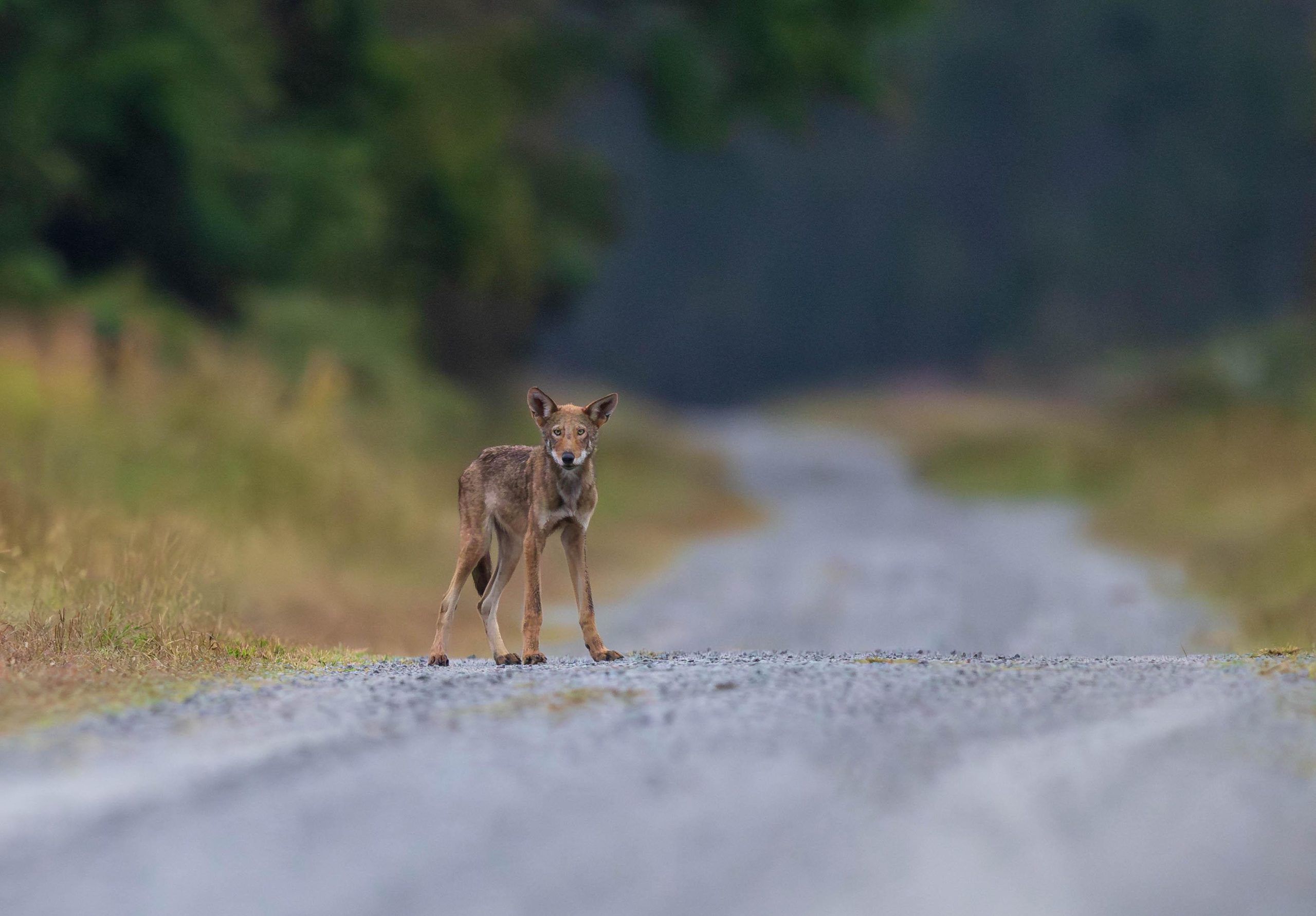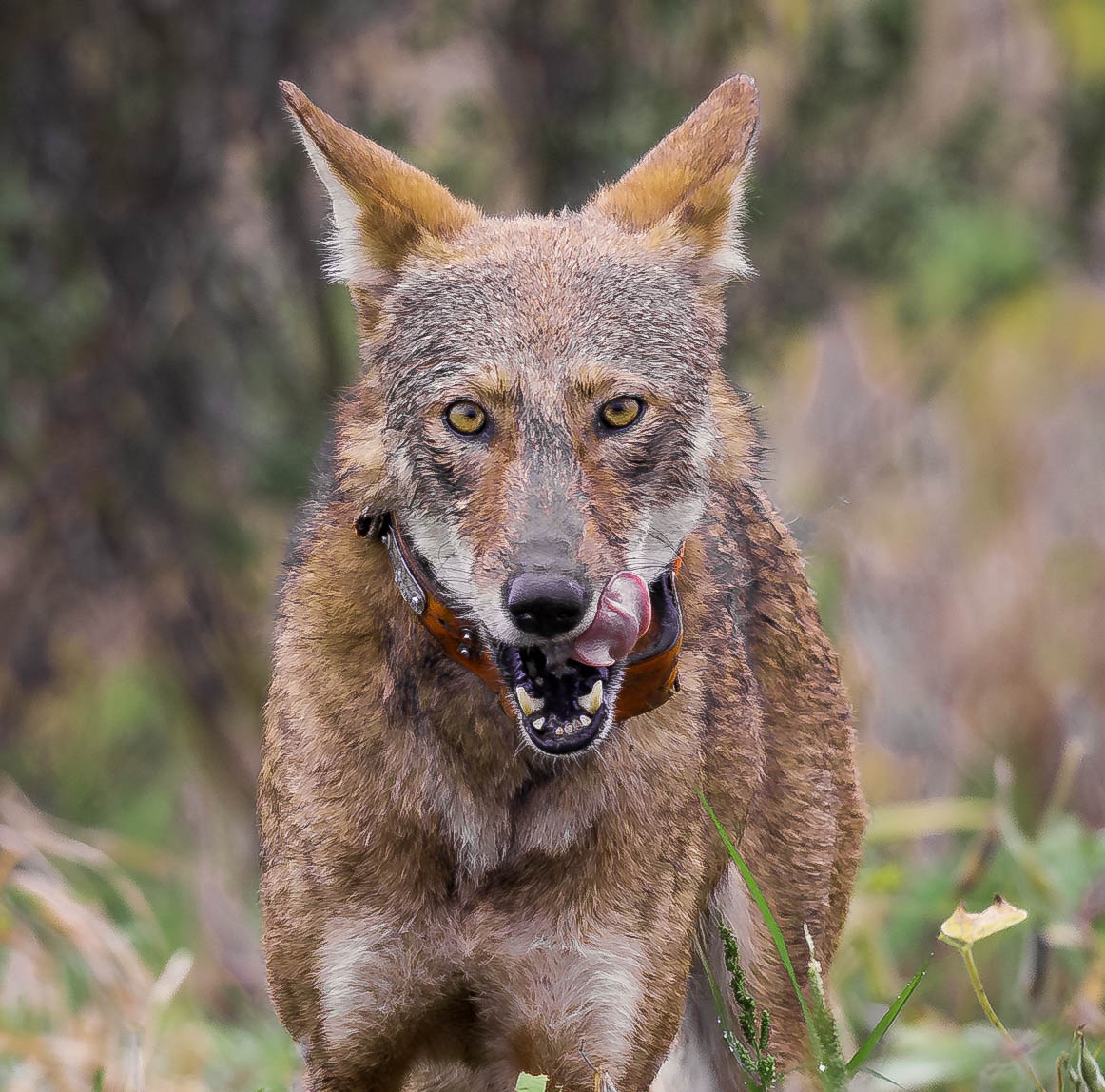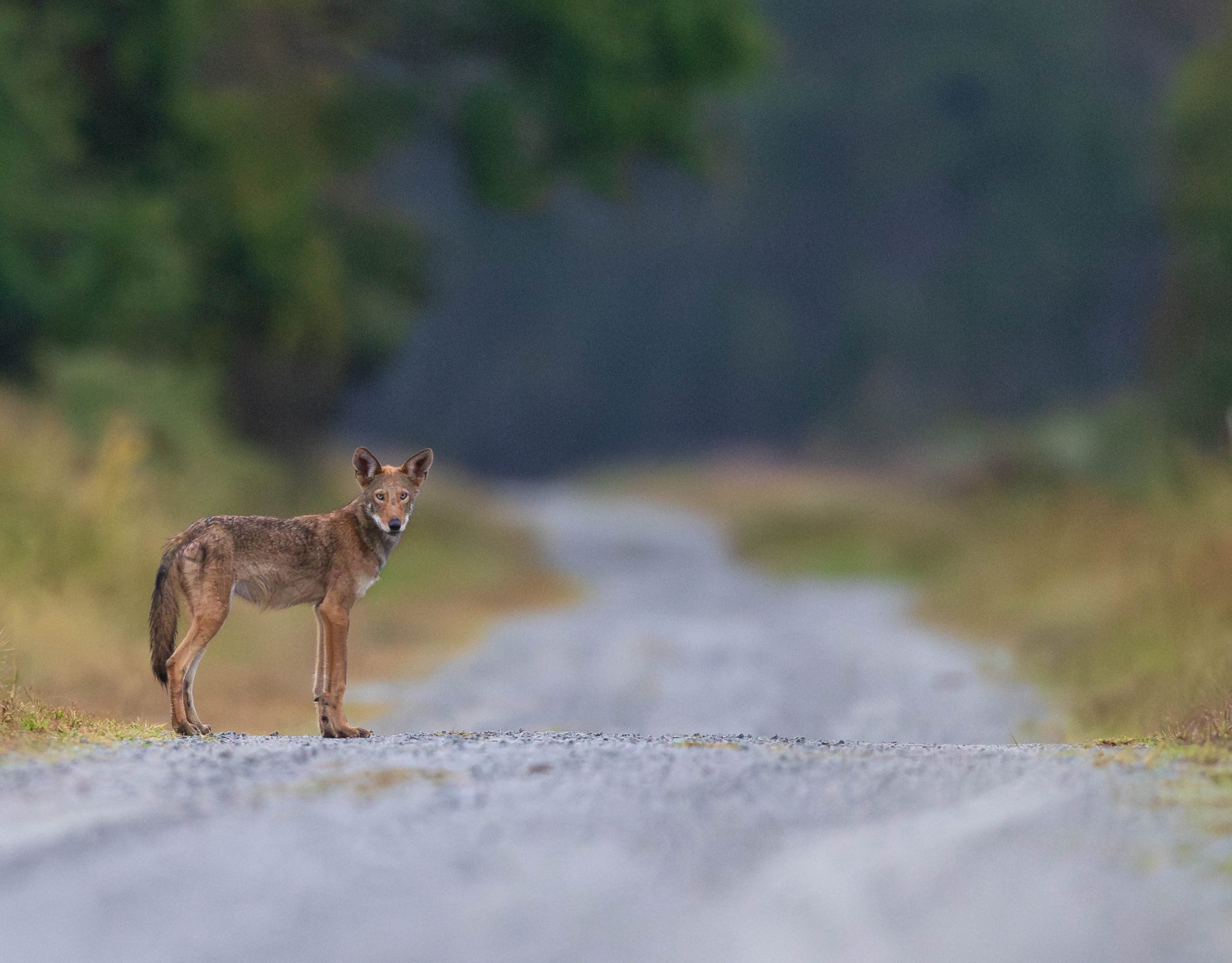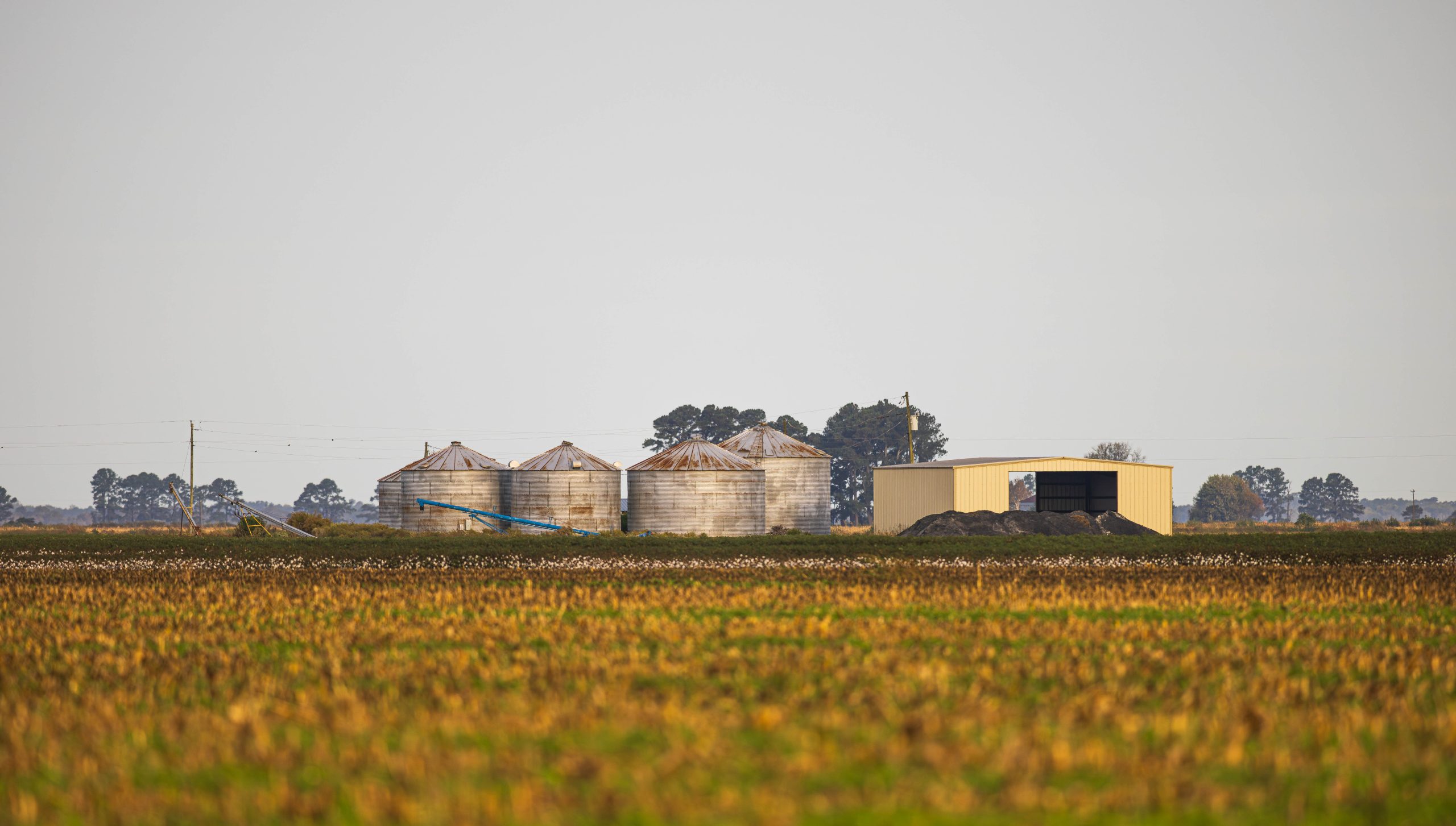Listen, See, Feel, Connect: What Wolves Have Taught Me About the Link Between Humans and Nature
October 24, 2025
What does nature sound like to you: Is it the haunting bugle of a bull elk? The mysterious call of the loon? Perhaps the low hoot of an owl? Or maybe the ancient song of the humpback whale? I believe that all of these are not complete without the enchanting howl of a wolf.
I remember the first time I heard a Red Wolf howl. It was in 2020, at the height of a terrifying year for the human species. I needed to escape into nature, to center and remind myself that humans are just a small part of a larger world. That’s when I Googled “endangered species near me,” which led me to the Red Wolf. Living only five hours from the Red Wolf recovery area, I decided, with camera in hand, to go camp near Alligator River National Wildlife Refuge. I wanted to try my luck in seeing a wolf, which disappointingly didn’t happen. Little did I know this would be the first of dozens of trips I would take over the coming years to document these elusive canids.
On that first visit, while I was sleeping in my tent across the road from Alligator River, I was awoken by something I had never heard before—the long, low howl of a Red Wolf. I was shocked; there were only seven wild Red Wolves on the landscape at the time, and I had pretty much already given up on seeing one. I immediately texted my partner Dani, we had just started dating, and said, “I can hear a Red Wolf howling!” She probably thought, “Who is this strange guy, sleeping in a snowstorm in a tent, texting me at 1:00 a.m. about wolves?” I’ll never forget hearing that wolf; it howled for what seemed like an eternity, but what also felt like a millisecond. The wolf called out several times. The howl went unanswered.
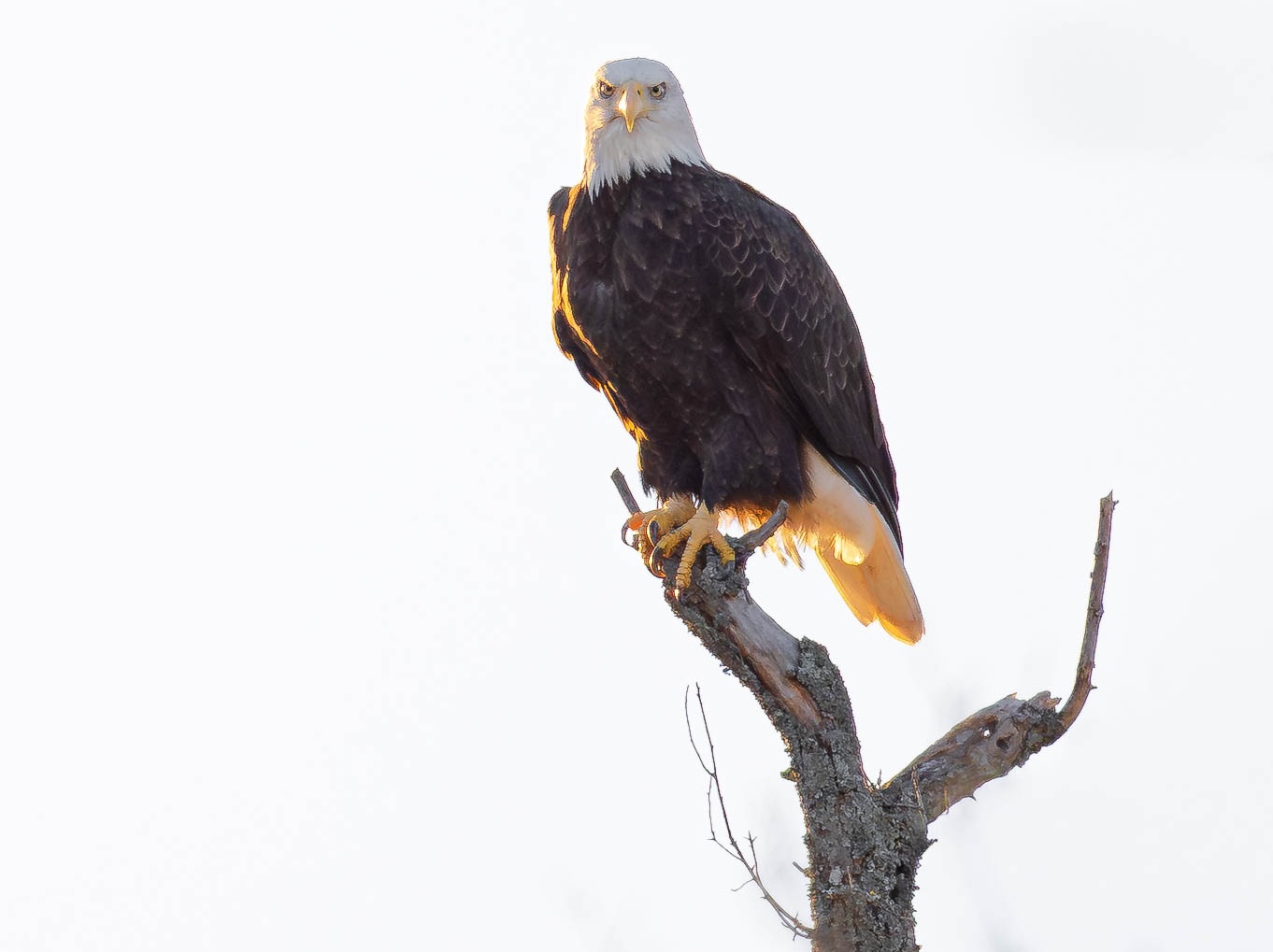
What does nature look like to you: Is it the intense stare of a bald eagle? Or the gigantic claws of a grizzly? Maybe it’s the great migration of salmon or the painted landscapes of the American West and Southwest? To me, nature is all of these things, but one animal encompasses all of nature’s exquisite sights: the wolf and its fiery gaze.
Since my first trip, I have been fortunate to see many Red Wolves. I’ve seen puppies born, new generations of wolves navigating the landscape, new packs being formed, the tragic deaths of wolves, territorial disputes, and amazing, yet brief, one-on-one encounters. Of the dozens of Red Wolf sightings I’ve had, my most recent one may have been the most rewarding.
I have watched this exact wolf grow from a rambunctious puppy to a daring sub-adult, and now into a fearless and cunning first-time mother. She has that green fiery gaze Aldo Leopold so brilliantly describes in A Sand County Almanac that forever changed his personal view on wolves, “We reached the old wolf in time to watch a fierce green fire dying in her eyes. I realized then, and have known ever since, that there was something new to me in those eyes.” Just as Aldo felt about that wolf, I feel about this particular Red Wolf. Having watched her grow up and become a mother, there is something in those eyes that has changed me forever.
What does nature feel like to you: Is it the warm tropical waters of the Canaveral National Seashore against your legs? Or is it the gritty pebbles in your shoes as you hike some unexplored trail? Maybe it’s not a physical sensation at all, but an emotional feeling in the presence of an animal? I have felt all of these textures in nature; all are just as physically moving as the next. But when I’m in the presence of a Red Wolf, nothing can compare. If you’ve been lucky enough to see a wolf in its natural environment, you know the exact feeling I am speaking of. You wonder if you and the wolf feel the same emotions of excitement, focus, nervousness, curiosity, and connection. I like to believe that all animals can feel the same emotions as humans, if not even more heightened.
I have come across wolf tracks that were just hours, if not minutes, old. I have sensed the wolf may be somewhere in a field, studying me to try to understand if I am a friend or foe. I have waited for hours to photograph Red Wolves. Sometimes, right as I am about to call it a day and give up, a wolf reveals itself almost as if to say, “Thank you for waiting, I’m here.” I will quietly thank a wolf after I snap a photo; it’s my way of connecting with an animal that I have no common language with, but can feel a common presence. People ask me how I capture photos of wolves, and sometimes the only answer I can say is that it’s just a feeling, a feeling of presence.
How do humans connect over nature: Is it through shared experiences on a hike, kayaking a river with friends, or a fishing trip? Is it the time you photographed that life-list bird with your partner? Or is it putting assumptions aside and asking what someone’s opinion is of an animal like a Red Wolf?
Last week, while down in the Red Wolf recovery area, I was camping in my tent in a nearby state park when a Nor’easter came ripping through the southeastern U.S. It was a night of anxiety, extremely heavy rainfall, branches breaking overhead, and intense winds that threatened to lift my tent clear off the ground. After a restless and sleepless night, I was exhausted and demoralized. This was not the start I had envisioned for a 10-day photography trip. I was camping close to Creswell, North Carolina, rumored to hate wolves. I had always been intimidated to spend much time there; it did not come across as inviting or friendly to outsiders.
Having gone through nature’s carwash over the previous 24 hours, I decided I needed a nice, warm cup of coffee and some biscuits. I worked up the courage and stopped at a little coffee shop in the tiny rural coastal community. To my surprise, I was greeted by a warm and cozy café playing Curtis Mayfield and a cheerful couple who owned the coffee house. They asked where I had come from, since I was looking a little worse for wear. My entire perspective of this town changed that morning. I’ve always been cautious when asking folks who live in Red Wolf Country what they thought about the wolves. Some people hate them, some don’t care one way or another, and some don’t even know they exist. The last shooting of a Red Wolf happened in 2023 on a farm in Creswell.
I decided to ask the café owners what they thought of these amazing animals. I remembered my old personal catch phrase: “Every conversation counts.” The husband was so excited to see a photo of a Red Wolf; he had lived in the area most of his life and had only heard about them. His wife grew up in Creswell and had no idea there were wolves living throughout the area. She was enthralled to know that her little town was home to the only endemic wolf in the United States.
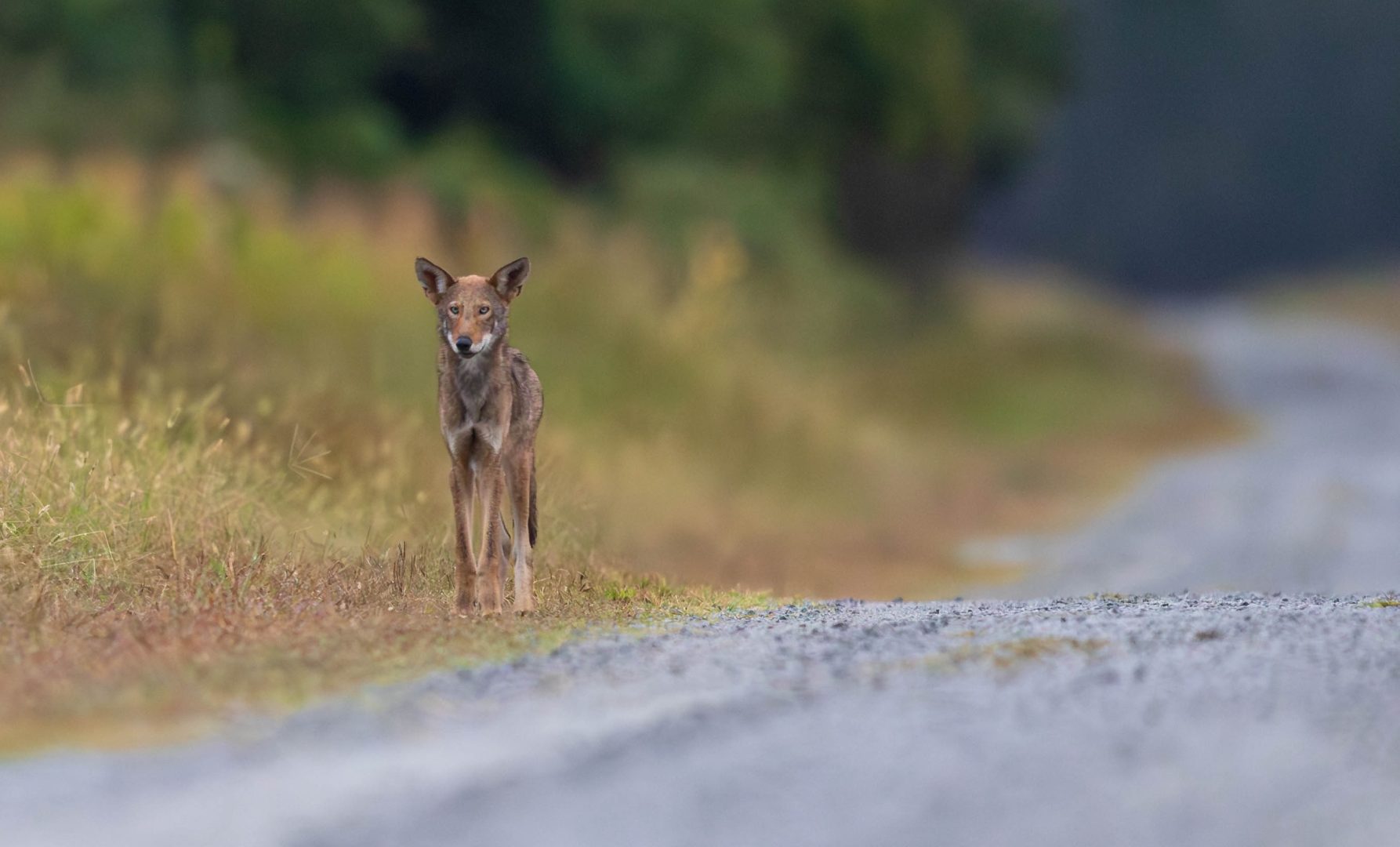
As we talked about wolves, our conversation melded into the struggles of small rural communities, an aging population with limited health services, schools being closed down, environmental issues such as flooding and dirty drinking water, and the struggle to attract tourists from the busy Outer Banks, 50 miles to the east. The three of us ended up talking for almost four hours on everything from life, politics, race relations in the small community, and of course how Red Wolves can help a town like Creswell feel proud and empowered.
This interaction reminded me yet again that every single conversation does indeed matter. Speaking with people and sympathizing with their perspectives may only move the needle a tiny fraction of an inch, but nonetheless, it moves. When it comes to conservation, human-to-human connection is just as important as the human-to-nature connection. As humans, we all need to feel we are heard and understood by one another in order to feel we are a part of and welcomed in society and the natural world. The more curious we are and the more conversations we have with one another, the more connected we all are—to each other and to nature.
Had I not taken that first trip to hear a Red Wolf howl, this journey of wolf advocacy would have never taken place. I would not have met the amazing people I have over the years, captured amazing photos, bonded with new friends over new puppies, experienced the tragedies of wolf deaths, collaborated with non-profits to raise money for wildlife crossings, or even write this article. To some, wolves can be a divisive animal, but they can also be an animal that brings people together to talk through differences and find common ground. In my world, wolves are the bridge that connects people and brings differing viewpoints together.
I ask these questions again: What does nature sound like to you? What does it look like? What does nature feel like? How do humans connect with one another and with nature to overcome differences and assumptions? The answers to these questions are ever evolving, just as nature is and all of its animals are.
All photos by Eric Trefney.
Eric Trefney grew up in Michigan in the metro-Detroit area, where he would often camp and canoe with his family and friends. After finishing graduate school in 2015, Eric joined the Peace Corps where he was assigned to Senegal, Africa, in the Sahel desert region. Eric practiced and trained in agroforestry techniques with local Senegalese partners as well as women’s financial literacy. In 2018, after his 2 years of Peace Corps service, Eric moved to the Washington D.C. area and was gifted a camera by his dad. After learning about the critically endangered Red Wolves in North Carolina, Eric’s passion project became photographing, educating, and advocating for the Red Wolf’s survival. Eric and his partner Dani currently reside in Virginia and are often out enjoying the state’s beautiful parks and rivers.

